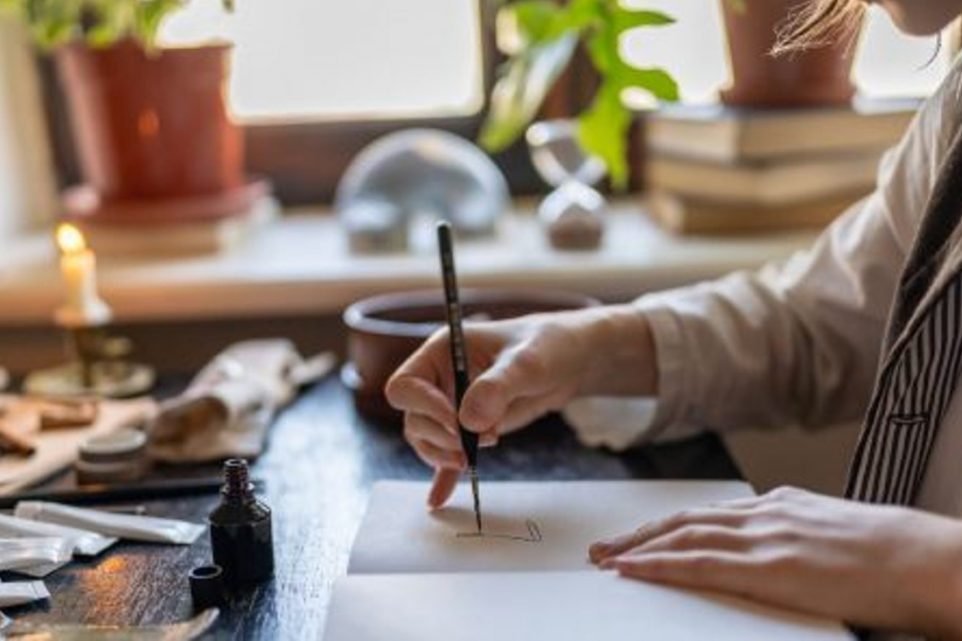Pen and Ink Drawing Tips for Beginners

If you’ve wanted to try pen and ink drawing, you’ve come to the right place. Drawing with pen and ink can be incredibly gratifying, especially when the drawing begins to take shape, but getting started is the hardest part, and many new drawers make the mistake of equipping themselves with the wrong supplies and jumping right in without learning the basics.
In this post, we’ll discuss all the tips, tricks, and supplies you need to know before starting your pen and ink journey.
Getting Started
Before diving into your first project, stocking up on the right supplies is important. High-quality paper is essential for creating a workable surface for your pen and ink drawing. Look for papers specifically for use with inks or other water-based media (you don’t want bleeding to happen). You will also want to choose pen types that are suited to your needs. Fine-line pens will give you the greatest control over detail work. You can also use brush pens or even regular markers if you’re looking for bolder strokes.
Pen and Ink Line Thickness
Understanding how various pen strokes interact with the paper is key when drawing in pen and ink. To create delicate lines, hold your pen at a shallow angle to get finer lines at the start of a stroke, and then gradually increase the pressure as you move across the page before lifting off onto the next stroke. For thick lines, hold your pen perpendicular to your paper instead. You can achieve slanted lines by combining both of these techniques. You can also experiment with different types of pens — such as brush pens — to give you different line effects.
View this post on Instagram
Ink Blending Techniques
To create a smoother transition between values in your drawing — from light to dark — using an ink blending technique can be incredibly useful. Try the techniques in the post below. You can choose to hatch, cross-hatch, stipple, scumble, or smudge.
View this post on Instagram
Adding Color to Your Drawings
In addition to rendering intricate details or textures with ink alone, you can also add color to your drawings with different shades of ink, colored pencils, watercolor paint, etc. When using water-based ink, be careful of adding color that could cause the lines to bleed.
Tips and Tricks for Working with Pen and Ink
Another important tip when working with pen and ink is to practice not to erase mistakes but rather turn them into opportunities for lines or textures that could enhance your drawing later. You also have the option of using whiteout if you need to. Always start with a light hand when creating strokes and keep your pen nibs free from excess build-up. Not cleaning them properly could cause them to become scratchy.
Conclusion
Your art supplies are everything so store and care for them to prolong their life (it could save you money in the long run). Cap each pen and store brush pens upright so their bristles don’t get bent out of shape. Fineline pens should never be left uncapped when not in use. Keep you pens away from heat. Finally, keep all your utensils in a bag or drawer so they don’t run away on you, and have fun practicing!
Trusted Insights from Artists
At Art Life Today, our passion for arts and crafts is at the heart of everything we do. We understand that the right tools and materials can make all the difference in your creative projects, so we take our responsibility as reviewers seriously. Our goal is to help you discover the best products that will inspire your creativity and bring your artistic visions to life.